Garlic scapes are long, deep green, curly green, and the first item in the spring farmer’s market.
These are mainly the soft stem and flower buds of a garlic plant, typically a stiff neck garlic plant found in Canada and the northeastern US.
First, the scapes start to grow from the bulb than from the coil, and when it is time for harvesting, they look like long, curly spring beans.
Generally, most plants have only one period of harvesting. Still, some plants require two harvesting processes like garlic, one being the harvest of garlic scapes in late spring and early summer, and the other is of the bulbs in late summer.
It is somewhat essential to cut the garlic scapes, and if not doing so, the plant will grow its stems and flowers, leaving its bulb to be small and flavorless.
In general, garlic plants, just not the scapes, require warm soil to grow, which is why they come in the late spring and early summer season.
Once the Spring season has arrived, and the soil has warmed up, you can start growing your garlic plants. However, in most parts of Canada, you can also grow them in June and July.
If you are the ones wondering how they taste like, then you are no different. People think that garlic scapes taste just like garlic, but that is not true, it tastes more like asparagus.
Their taste has a combined taste of onion, scallion, and garlic. They have a less intense taste like the bulb has because it has greener in it, so they provide a fresh green taste.
You can find garlic scapes mostly in the Asian supermarket, where fresh vegetables or plants are kept in the season.
They are also available in the farmer’s market or independent groceries near you. And if you are the person who has a farm or loves to visit farms, then you can pick the scapes directly from there.
And since these are a seasonal crop, make sure to collect plenty and stock them up until the next produce. You can chop them up and keep them in Ziploc bags for months.
Now the Question Arises: What Can You Do with Garlic Scapes?
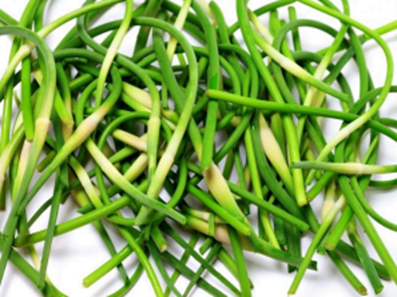
For starters, garlic scapes are the leftovers of a garlic plant, and so they are edible. Hence, you can create many interestingly unique recipes with them.
But if you do not wish to make any recipe, you can also freeze them for later use, when you are in the mood to make some good, aromatic recipe, or can them, just like pickles.
Freezing
For freezing the garlic scapes, all you need is to chop them, put them in a Ziploc bag, and keep them in the fridge. Whatever you wish to make, like a stew, soup, or any other dish, take them out, and put them in.
Canning
For canning, just cut the scapes, removing the flowers and little parts of the bulb, and put them in a jar filled with vinegar, salt, and one red chili, if you want it a little spicy.
Recipes
The best use of garlic scapes in recipes only. Here we will tell you a few recipes that you can make using garlic scapes.
4 Different Recipes Using Garlic Scapes
1. Grilled Garlic Scapes with Sea Salt
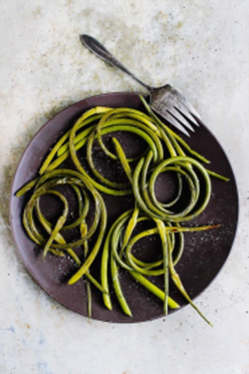
For this recipe, you require 1 pound of garlic scapes, or less, according to your convenience, one tablespoon of olive oil, sea salt, and black pepper.
Start by heating your grilling pan to a medium flame. Meanwhile, wash and dry your scapes, trim the edges or ends and leave the whole part, do not cut in between.
Massage your scapes with oil, salt, and pepper. Put them on your griller and toss from both sides until crispy brown. You can tell they are done when they are soft on the inside and crisp on the outside.
Plate them as it is and sprinkle some salt over it if you like.
2. Garlic Scape Pistachio Pesto
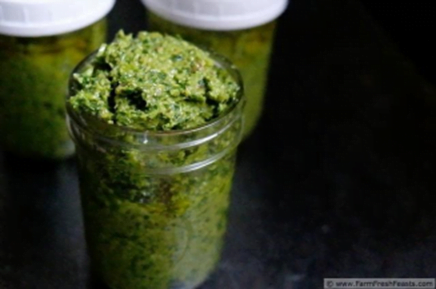
For this recipe, you need a cup of garlic scapes, one cup of basil leaves, or a mix of basil and parsley, ¼ cup pistachio nuts, toasted for a few minutes until they are fragrant, ½.
A cup of shredded parmesan cheese, 1-3 tablespoons lemon juice, ½ teaspoon salt, ¼ teaspoon pepper, ¼ cup of olive oil.
Assemble all these ingredients into a food processor and pulse them until minced. Once you feel that all the ingredients have mixed properly, it is time to add the olive oil into this and mix again.
Taste your pesto in between and add whatever you feel is there to be added more. You can either eat it right away or store it in a Ziploc bag and store it in the fridge.
3. Garlic Scape and Goat Cheese Omelet
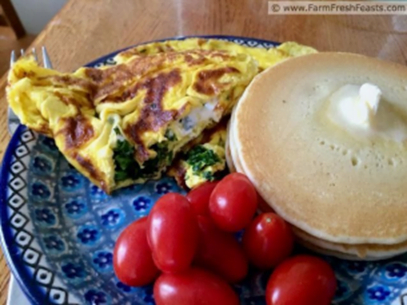
Yes, you can add garlic scape in your omelet too. Here is how. All you need is one garlic scape, three tablespoons parsley leaves, three large eggs, two tablespoons half and half, ⅛ teaspoons of salt and pepper, one tablespoon bacon grease, or any other fat, and 2-3 tablespoons of goat cheese.
The first step of making this omelet is by chopping the garlic scape, and parsley leaves finely. In a separate bowl, add eggs, half and half, spices, and mix them well.
Heat an 8-inch skillet on medium flame, add the bacon grease or any other fat, while it is bubbling, add your egg mixture in the pan, Swirl it so that the egg spreads to the bottom of the pan, and low the flame.
When you feel your egg is done from the bottom, add the scapes and herbs, and the cheese on one side of the egg and fold the other half. Turn the flame off and let the egg sit in the pan for few minutes. Serve it with cherry tomatoes or pancakes.
4. Garlic Scape Herbed Cream Cheese
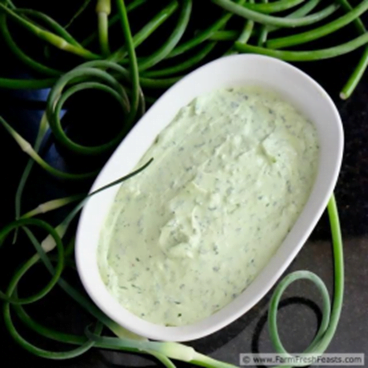
Cream cheese is such a great dip and goes well with everything, if you want to spread it on a slice of bread, or make rolls, or even add to your pasta.
Adding garlic scapes to your cream cheese will give it that fresh green taste that you will love. Let us see how you can make this.
Start by keeping 2-3 garlic scapes finely chopped, ¼ cup fresh parsley leaves, preferably Italian parsley, but if you do not have any would work, two tablespoons chopped chives, 8 ounces cream cheese, ¾ teaspoon of black pepper, ½ teaspoon of salt.
Start by putting garlic scapes, parsley, and chives in the food processor and mince them. Add the cream cheese to the mixer once everything has been cut down finely, and mix again.
Do not forget to stop the mixer in between and scrape the sides.
Now add all the spices and blend for the last time. Transfer to a container and keep in the fridge for 30 minutes or one hour before serving. You can also use this as hummus and serve with carrots, potatoes, beetroot, or a tortilla dip.
Conclusion
Just like spring onions have both the bulb and the green leaves, the stiff neck garlic plants have the bulb and the curly green stems. Both are to be eaten.
If you think that these are not for eating, then you are wrong, you can make endless recipes from them, and they are to be eaten.
In fact, by eating the garlic scapes, you are doing the garlic plant a favor by completing their growing cycle. So, you see, neither are you helping your garlic grow healthy, but you can also enjoy the scapes.
There are many uses of the garlic scapes, like freezing them or canning them, but the major is making recipes.
Here we have shown you a few recipes you can make at home with readily available ingredients, and you and your family are going to love them—no more wasting the garlic scapes anymore.

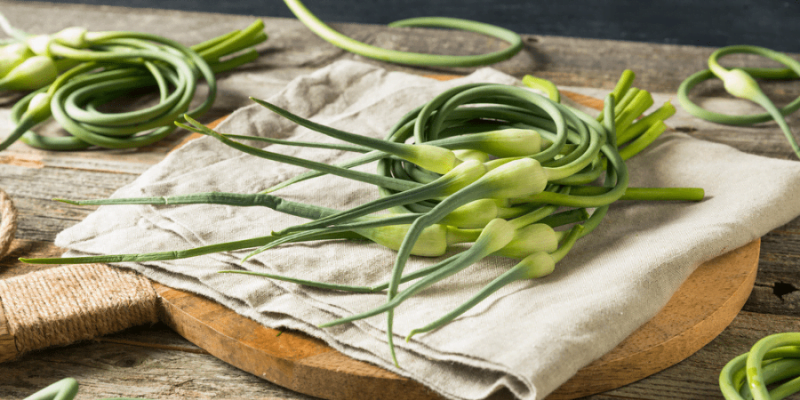


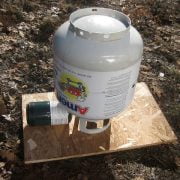

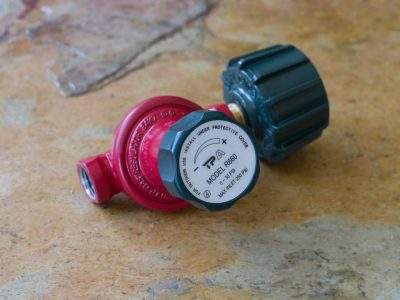



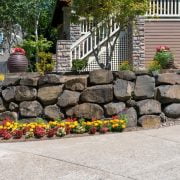



Comments